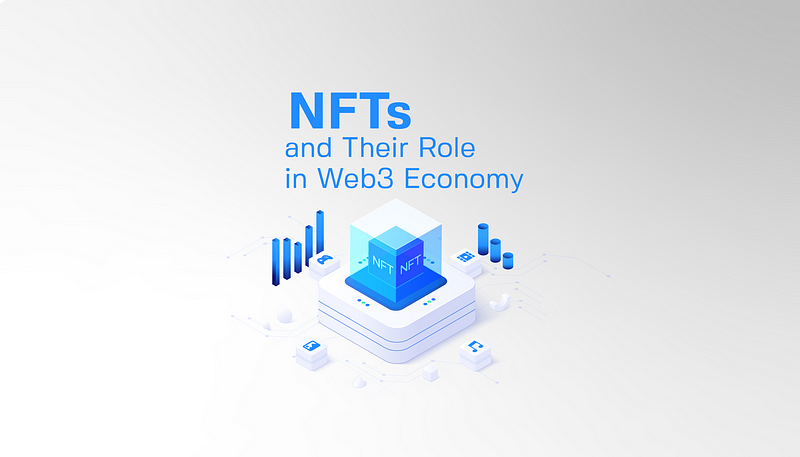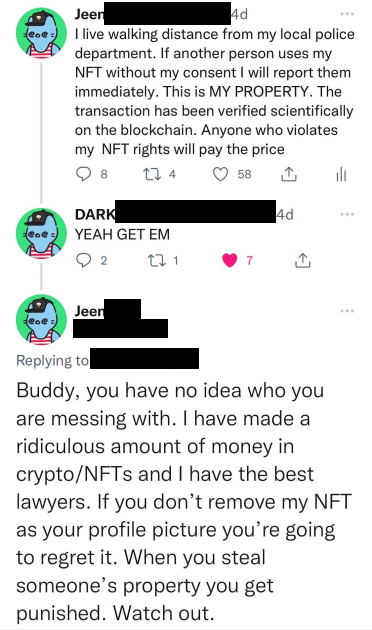NFTs and Their Role in Web3 Economy

On 1 May 2007, a graphic artist called Mike Winkelmann, better known as Beeple, started creating a new digital artwork every day, without a backlog, for 5000 days straight. For context, imagine feeling a little plump around New Years, making a resolution to start hitting the gym, and then not skipping a single day for over 14 years. He created a collage of the first 5000 days of his project and turned it into an NFT, which sold for $69 million, via the auction house Christie’s.
So, what is an NFT? An NFT stands for a Non-Fungible Token. A fungible asset is something that isn’t unique -like a dollar. A dollar is always worth the same, regardless of whether it’s a crisp new note or one that has seen unforgivable things in a back alley. A non-fungible asset is unique and can’t be replaced with another asset of the same kind -like the Mona Lisa. There are other paintings in existence and copies of the famed Da Vinci artwork, but there is only one authentic Mona Lisa. NFTs are similar, except that they are generally something digital: a digital painting, an audio note, a picture of your hairy toe.
“But mate” I hear you exclaim. “I can’t copy the Mona Lisa, but I know how to right-click and hit Copy.” That is true, but an NFT is designed to show you as the one true owner of that particular artwork.
Confused? Good. Most people are.
Others might have an exact copy, but that’s exactly what they are, copies. The original artwork is yours, and this ownership is proved via data stored on a digital ledger, which is a blockchain. If you ever sell an NFT, that data is also entered into the blockchain, essentially showcasing irrefutable proof as to who owns which NFT.
However, with many jumping on the bandwagon, paying through their noses for speculatively priced art in the hope of making millions, people have started growing suspicious of NFTs, and many view them as a ridiculous farce that will soon die out.
However, NFTs go far beyond pixel art of apes wearing sunglasses and have the distinction of showing irrefutable proof of who owns a particular asset. This means the concept of Non-Fungible Tokens has a lot of potential applications when it comes to making sure Web3 remains more secure and censorship-resistant than the legacy internet. Here are a few ways they could be used.
Identification
Earlier this year, San Marino used blockchain to issue Covid-19 vaccination certificates to its citizens. These certificates were basically NFTs that had 2 QR codes on them, allowing officials to quickly check anyone’s vaccination status. Immunity.life, a healthcare organization that uses blockchain technology to create impact, also hopes to do something similar in Zambia this year. While you may or may not agree with this application of NFTs, it is clear that they can allow people to create digital identities that remain relevant beyond borders.
Content Ownership
On this blog, we’ve often spoken about online content ownership being an absolute mess. We’ve looked at YouTube several times, so let’s turn our attention to Twitch. Earlier this year, several high-profile Twitch streamers started watching entire movies and TV shows on Twitch, along with tens of thousands of users. Jeremy ‘Disguised toast’ Wang got banned for a month after streaming the anime Death Note to thousands of users. DMCA (Digital Millennium Copyright Act) issues have plagued streamers for years as well, with Twitch now automatically muting streams when it detects copyrighted audio in a desperate attempt to reduce the number of copyright strikes it receives from the music and entertainment industry. NFTs could potentially change this, the original creator of a piece of content receiving a royalty every time that work is used/sold again.
Supply Chain Management
Managing inventory can be a huge issue, and with fake products being peddled all around the world, it becomes difficult to determine whether a product is genuine or a knock-off. The situation gets even hairier when it comes to products like medicines or other consumables. We are already seeing it in use, with WISeKey, a cybersecurity firm using NFTs to authenticate luxury watches across the world.
It’s evident that NFTs have the potential to be a lot more than Twitter profile pictures. (Not that there’s anything wrong with that)

The unique properties of an NFT mean it has an application in every field conceivable, from video game skins to academic credentials. While still in their infancy, NFTs might play a huge role in people’s everyday lives or even help secure the Metaverse. Or it can go out of fashion and fade out. Who knows, really.
One thing is for certain though. The possibilities are endless, and we are all curious about the potential NFTs can help us unlock.
Disclaimer: This post is not financial advice
Find us at www.pointnetwork.io
Join our Telegram at: https://t.me/pointnetworkchat